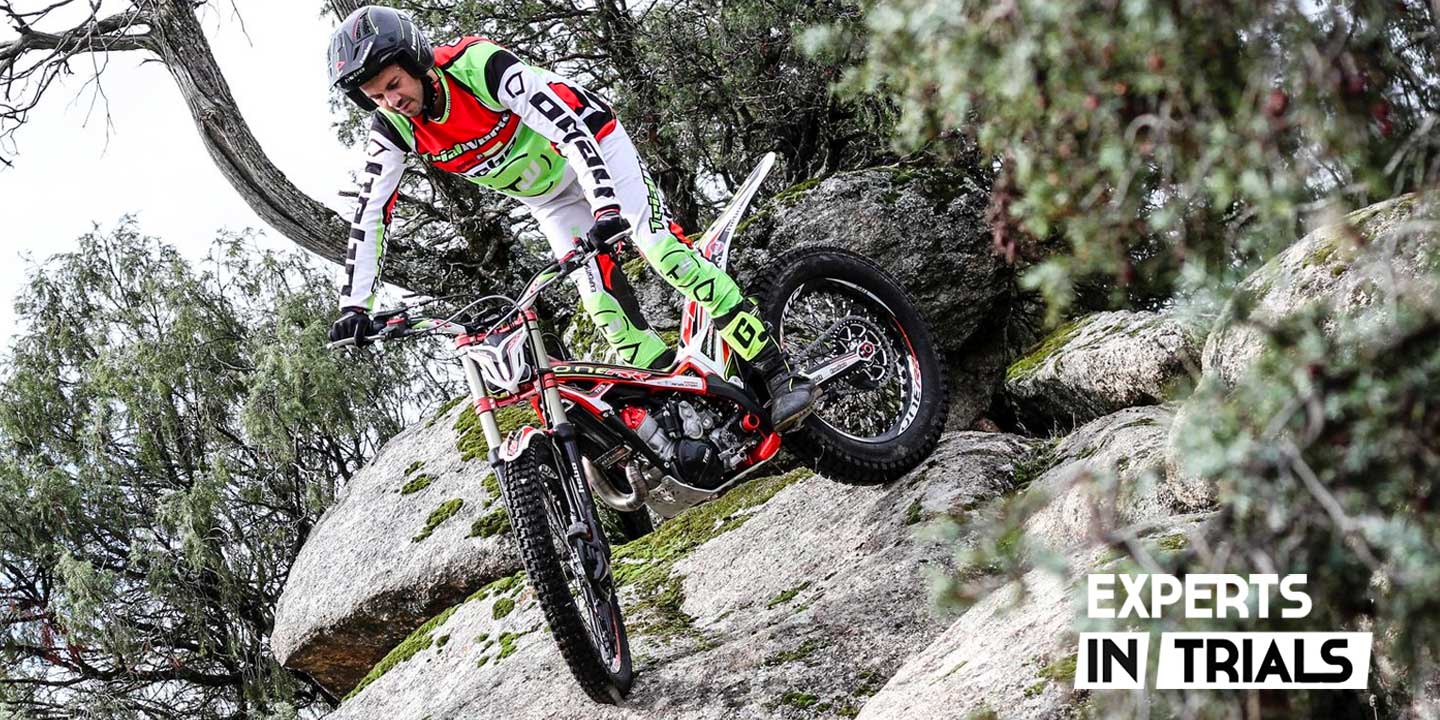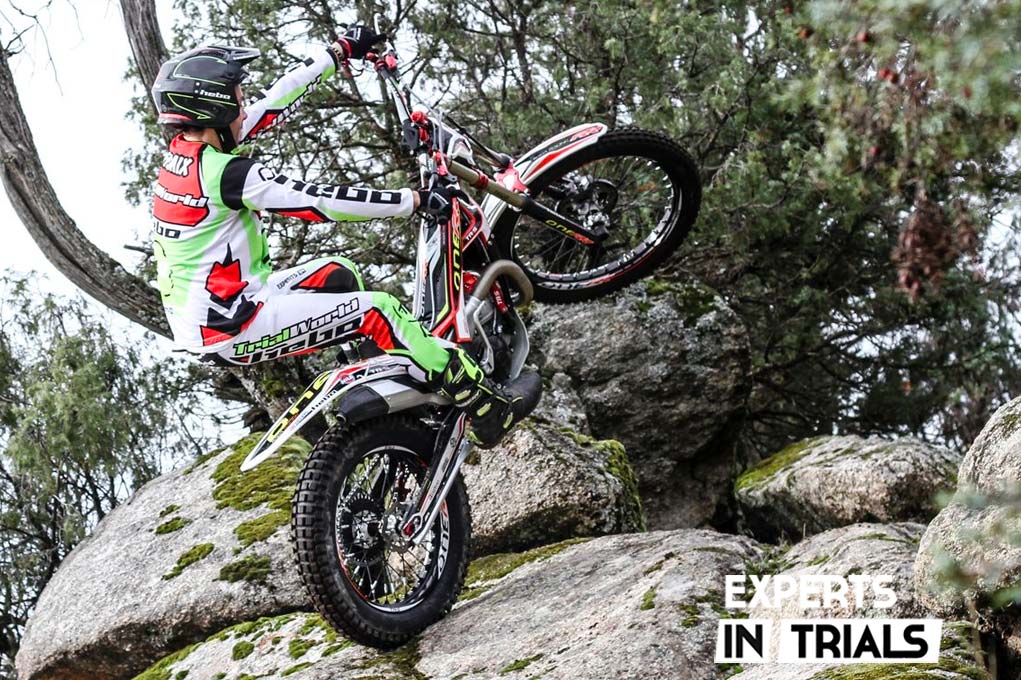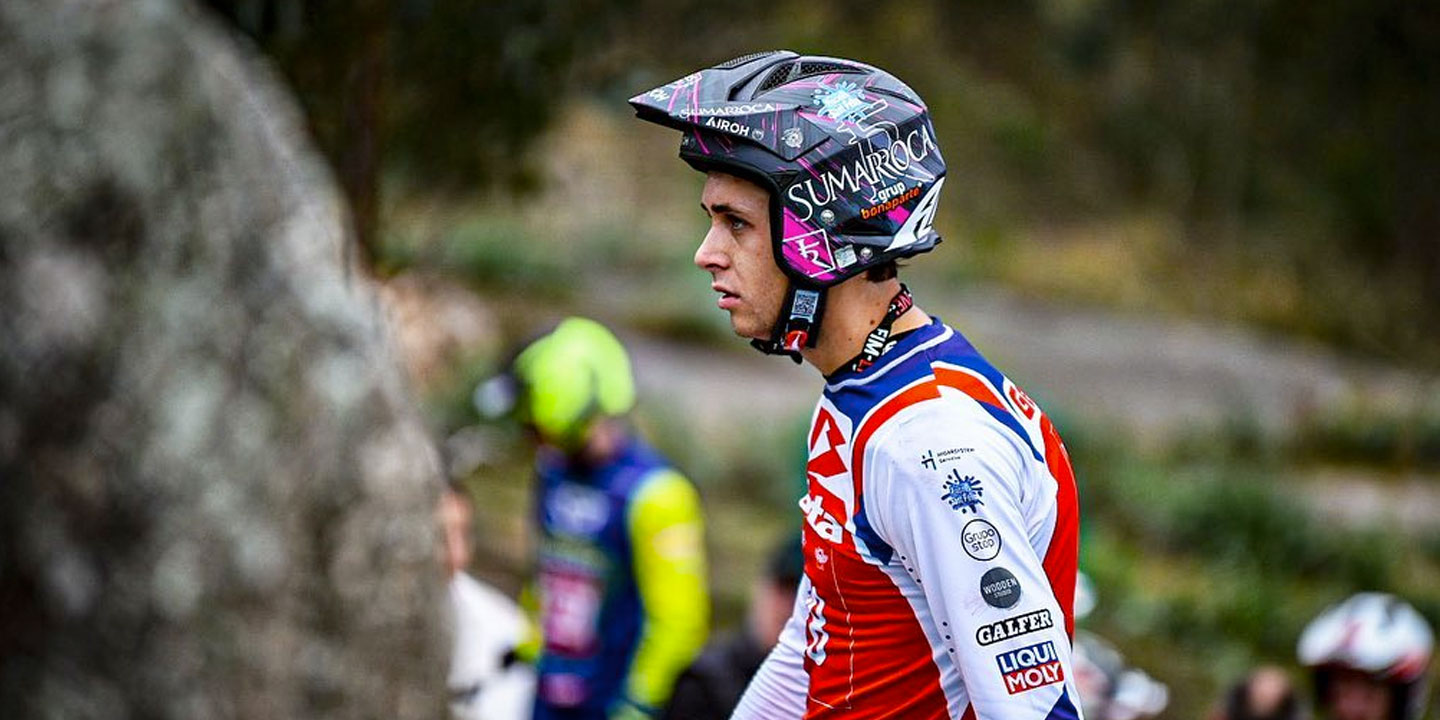
author: DAVID QUER
Co-founder of Trialworld. Instructor at Trialworld School. More than 20 years as a trial expert in specialized motor media.
Nowadays practically no amateur is able to squeeze all the juice out of the mechanics of a trial bike, nor take advantage of the multiple suspension settings, or even play with the electronics to customize the bike.
For all these reasons, the technical evolution in terms of the search for more performance is, to a certain extent, stagnant throughout the sector. However, we are pleased to find technical evolutions that complete this performance with more comfort for the rider, such as the electric start that concerns us.
The consolidation of this component means that older fans, with injuries or worse physical condition, can enjoy the bike with more guarantees, without having to give up any performance.
In this test we focused on the 2020 TRRS One RR with electric start, but this component is also offered in the GOLD and One R versions.
Differences TRRS One RR Electric Start
TRRS ONE RR BOOT
- Tech fork with aluminum bars
- Identical engine with new crankcases
- Modified crankshaft
- MITSUBA SM18 500W Starter
- 400 gram Li-Ion battery
TRRS ONE RR STANDARD
- Tech fork with steel bars
The electric start of the TRRS
Until a few years ago it was unthinkable to think that a trial bike could have an electric starter. In a market whose context is one of eternal struggle for weight reduction and technical minimalism, thinking of a component that modifies the aesthetics of the crankcase and needs a battery to work, might seem like a utopia.
Nothing could be further from the truth. The user demands technology, ease of use and resources that are resolute in the mountains. And therefore, electric starter is a precious commodity, especially if you’re in a pinch.
Jordi Tarrés said in 2019: “I blindly believe in this project”.
The challenge required modifying the TRRS engine, introducing a new crankcase, new crankshaft and a new magnetic flywheel with its cover.
In its innards, it works with an oil-bathed bearing system. Work has been done to achieve an optimal gear ratio, driven by a powerful 500W MITSUBA SM18 motor together with a Lithium-Ion battery of only 400 grams located behind the headlight.
All this represents a final weight of slightly less than two kilos compared to the model of the same name without electric starter.
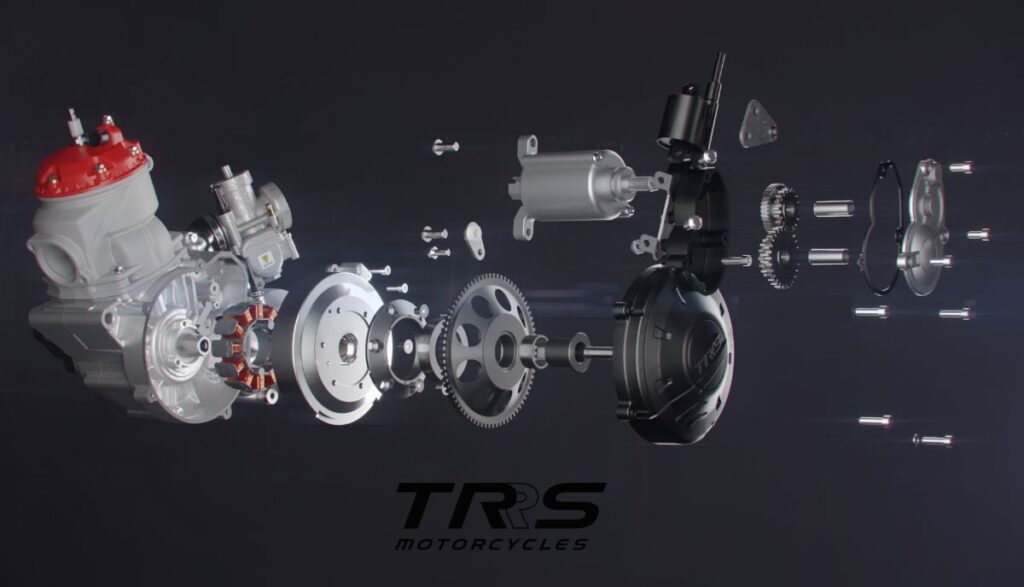
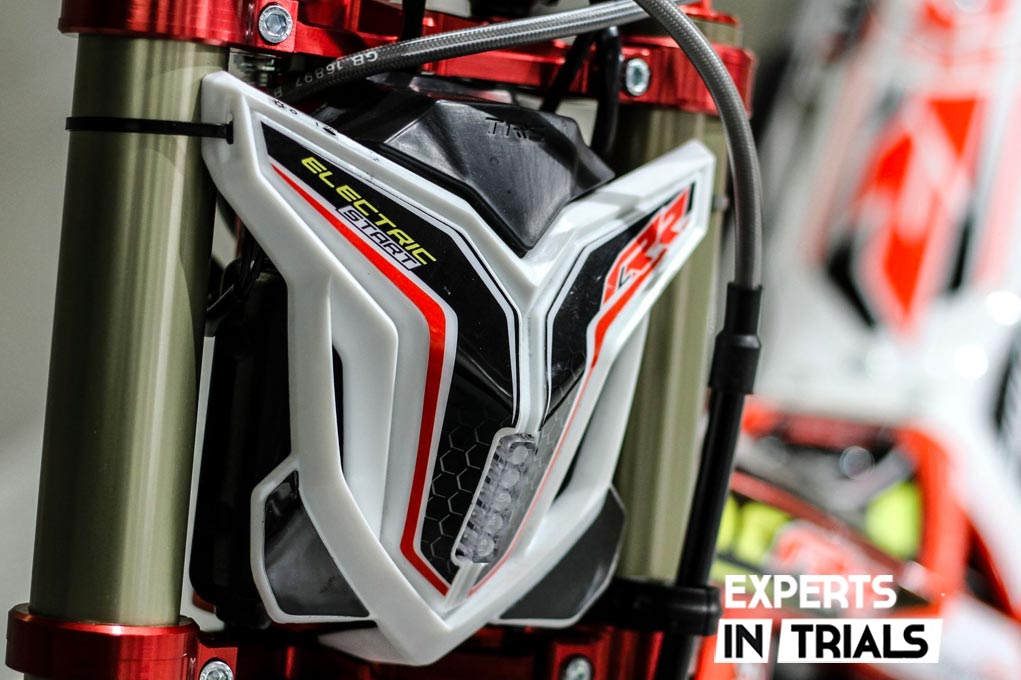
What You Need to Know About Electric Start
1) Weight. This is an aspect that has been put a lot of thought into the bike, and it shows. The battery goes behind the headlight (400 grams) and is compensated by an aluminum fork instead of steel. Therefore, little is appreciated in terms of weight. The rest of the system is at a very central and low point on the bike, so dynamically it doesn’t condition you either. All in all, we are talking about an extra two kilos compared to the standard model, which is relatively low if we take into account that it remains below 70 kilos.
2) Exposure to blows. In this case, the system is quite well integrated and resolved on the engine block. It does not go out of the frame line and the qualities are very good, so we do not compromise the mechanics more than necessary in the event of a fall.
3) Charging the battery. Although it is a small battery and we could run out of charge in case of excessive attempts to start up, the positive point is that it recharges dynamically. That is to say, we have the kick-start as an emergency and once it is running, the battery recharges.
4) If you have a TRRS without a starter and you want to put this extra, you can’t a priori, since it involves a deep modification of the engine, including crankcases, so the decision must be made beforehand.
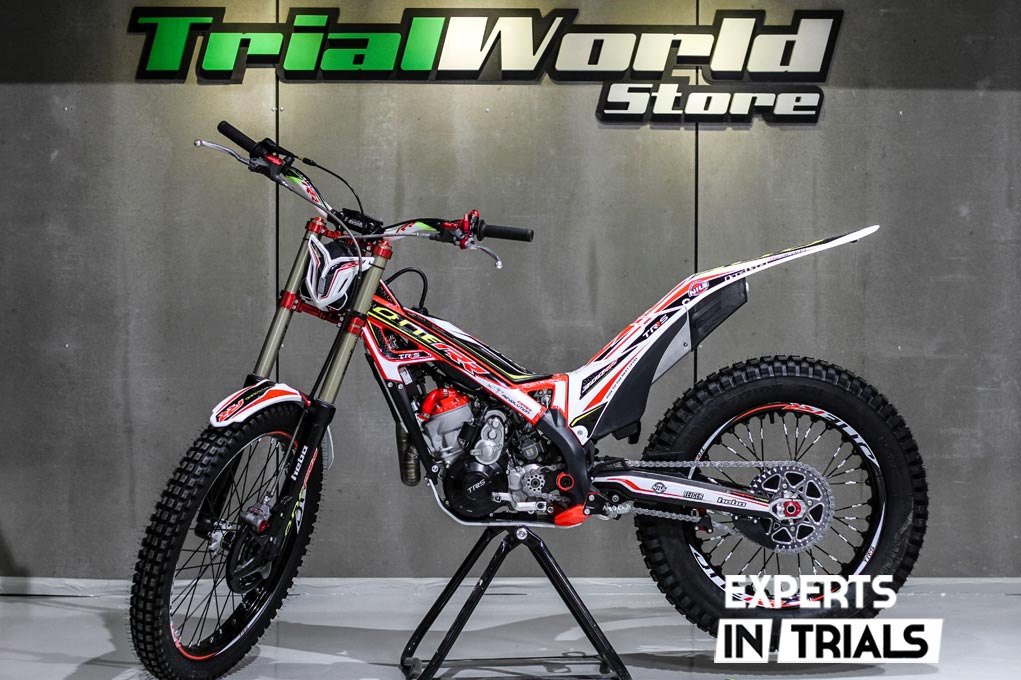
Is electric starting worth it in trial?
First of all, we focus on the start-up. The electric start system has forced the fuel tap to be repositioned (successfully) in the rear window of its frame. Of course, now we don’t have a reserve position, only open or closed. More inaccessible is the Keihin’s starter, which with all the starter kit next to it ends up being somewhat uncomfortable to access to remove it.
About the start-up, its operation and performance is fantastic. You don’t know how awkward it is to be starting the bike for a while in the areas until you try this device. Extras like this open up access for new customers and, of course, help older customers to make it easier for them to manoeuvre in the mountains. Great invention!
As a single note, it would probably have been interesting if in order to move the starter motor it was necessary to have the clutch engaged. Now, if the bike has a gear engaged, you can press the clutchless button and get a scare.
Our opinion, after the tests, is that it is an interesting extra for all audiences, since the difference in weight is practically imperceptible to an average fan thanks to the good weight distribution. Remember that the front end now receives a fork with aluminum bars, so despite even the battery, the model with a starter is lighter from the front than the standard one.
We have no doubt that we will soon see it in a large part of the market as a highly appreciated commodity. During the test we compared it to another TRRS without a starter and, doing the math, during a morning of trial, if you do sections, you can start the bike more than 40 times, so doing it with a button simplifies a lot.
Another detail that we haven’t been able to quantify more precisely is fuel economy. While without the starter you try to keep the bike started most of the waiting times, with the electric start you tend to stop the bike almost always. Basically, it means that for the same trial morning, you tend to have the engine running for fewer hours.
"When you forget your prejudices and focus on testing the performance of the bike, with the extra comfort of the start and its great weight distribution, you realize that we are facing a logical "extra" that should be consolidated in all models on the market."
The best
- Weight distribution
- Comfortable and practical
- Fuel savings
To be improved
- Starts without engaging the clutch, even when the speed is engaged
- Access to the choke
- Petrol tap without reserve
DATA SHEET TRRS ONE Rr electric start
- Displacements: 250-280-300cc
- Engine: 2-stroke single-cylinder
- Power: Keihin PWK carburetor
- Gearbox: 5-speed
- Weight: 69kg
- Price: 7.799 €
- Front Tire: Michelin X11
- Rear Tire: Michelin X11
- Brakes: Braktec, with 185mm and 150mm discs
- Rear suspension: Tech 39mm
- Rear Suspension: Reiger 2-way
- Chassis: Aluminium
- Start: Electric
- Fuel capacity: 2.5 litres
- Engine oil capacity: 350cc
- Spark Plug: NGK-R BPMR6A
